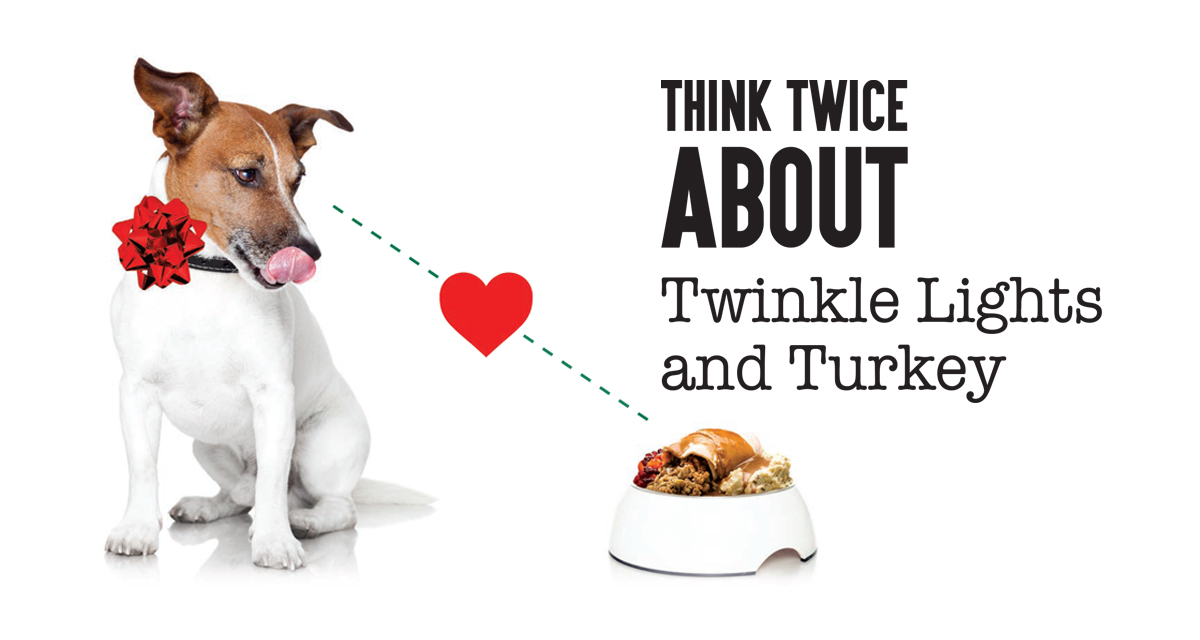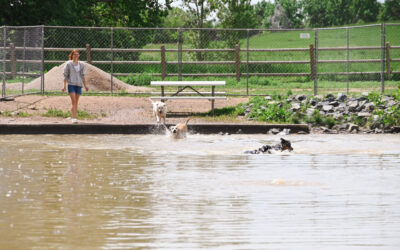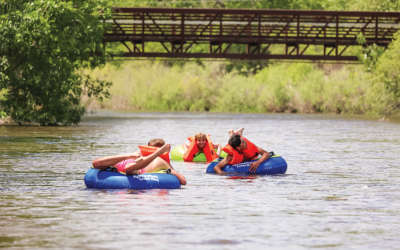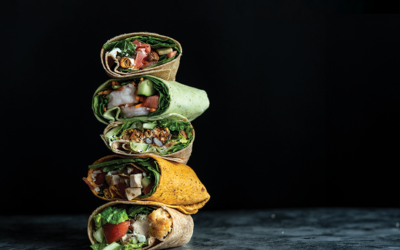By Megan Troutman
We all do it—it’s the season of giving, after all. Three generations impatiently sit around the table, soaking up the rich, buttery smell of turkey finishing up in the oven. Your mouth is watering. You sneak an olive from the veggie tray while you watch the kitchen timer tick down until it’s finally time to eat. You feel movement near your feet, so you lift the tablecloth just enough to see your dog’s begging eyes staring up at you.
How can you not sneak a little turkey under the table for Freckles, your wide-eyed basset hound? We all do it.
As the holiday season is upon us, so are critical decisions about potential dangers that arise for our dogs and cats. Tim Holt, an associate professor and clinical instructor in livestock medicine and surgery at Colorado State University, understands that not everything on the table is safe for your pet.
“Feeding snacks off the table to your dog and cat is not a great idea. You have to be selective and chose your foods well,” Holt says. “If you’re selective with that and you feed them green beans, [that’s OK] because even I feed my dogs off my plate because it’s a bonding thing and makes me feel good.”
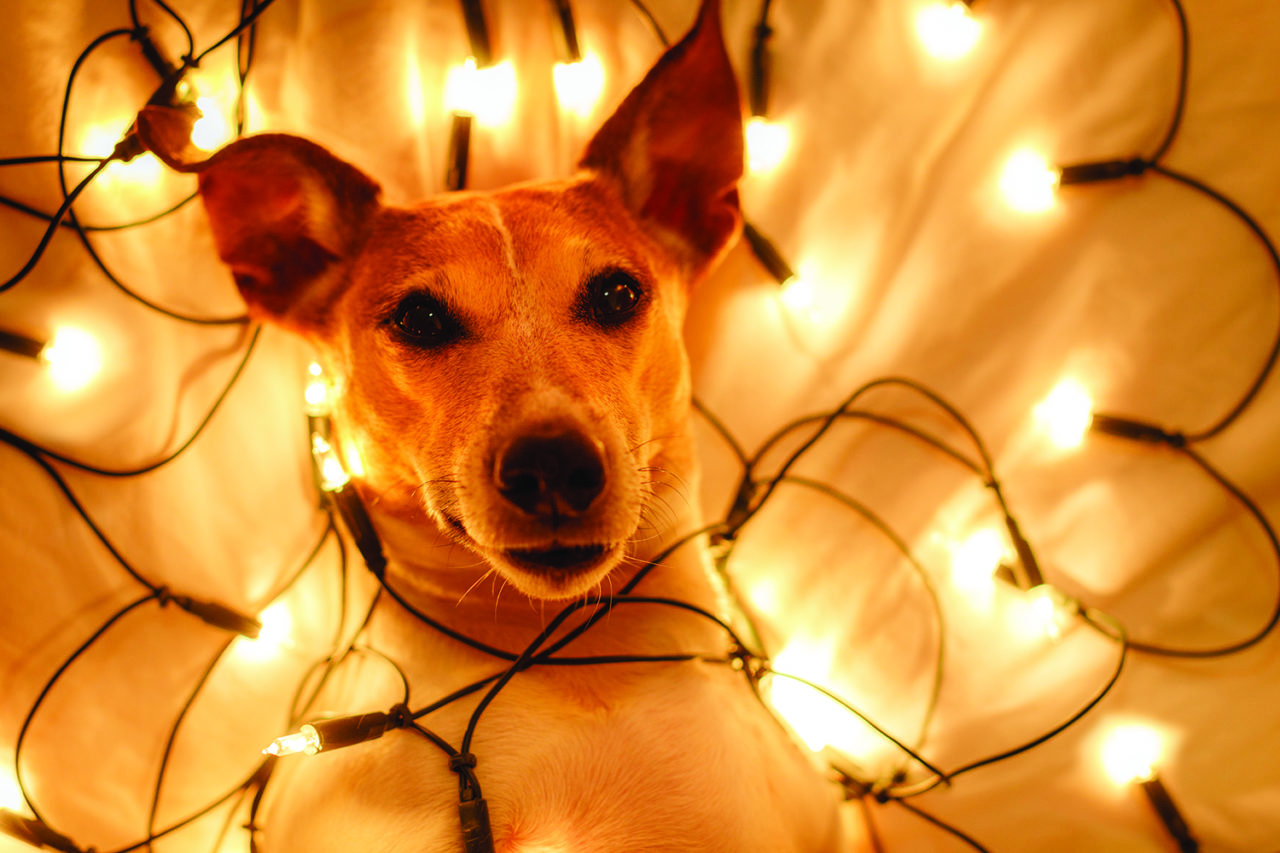
Prior to teaching, Holt was a veterinarian for 19 years at a private practice in Gunnison. During the holidays, he witnessed the aftermath of the most common holiday danger to pets: candy and chocolate.
“The reason I don’t eat candy very much is because I have seen the emergencies. I have opened up dogs that were impacted with candy and going into seizure activity, quivers and shaking, because they had consumed all that candy—but they eat everything,” Holt says. “They get the toxic effect of the candy, but then we still have the wrappers to deal with.”
Holt explains that the best place to keep your candy or chocolate is in the refrigerator, where your pets will not be able to smell or access it. This comes from personal experience, as Holt has a basset hound named Freckles, a pug named Pickles, five chickens and three cats.
Teva Stone, a veterinarian and co-owner of the Wellington Veterinary Hospital, was one of Holt’s students at CSU 11 years ago. In her time as a veterinarian, her biggest holiday warning, outside of chocolate, is fatty foods.
“Around the holidays, [be careful of] anything really fatty. We love to give our pets treats, whether we should or not, and a lot of times people don’t think about it and give them something really fatty, which can cause some pretty significant health problems,” Stone says.
Stone elaborates that if a dog is fed the drippings from a turkey or fat cut off a prime rib, it can cause gastrointestinal issues. Fat causes the pancreas to work overtime, so it goes into a selfdigestive process, which can lead to pancreatitis.
Stone and Holt both agree on several foods you can and cannot feed your dog from the table. If you feed your dog small doses of bread, green beans or a non-fatty piece of meat, that is OK. Things to avoid are fatty meats, grapes, hard bones like antlers that can break teeth, or any cooked or raw bones that splinter. Most of the food warnings pertain to dogs, as cats experience different environmental dangers during the holidays.
Chewing on plants is common for cats, so Poinsettias, which come in Christmas floral displays, can cause vomiting, drooling or diarrhea, but is a mild toxin in comparison to lilies. Peruvian lilies, tiger lilies, daylilies or Easter lilies are all toxic to cats.
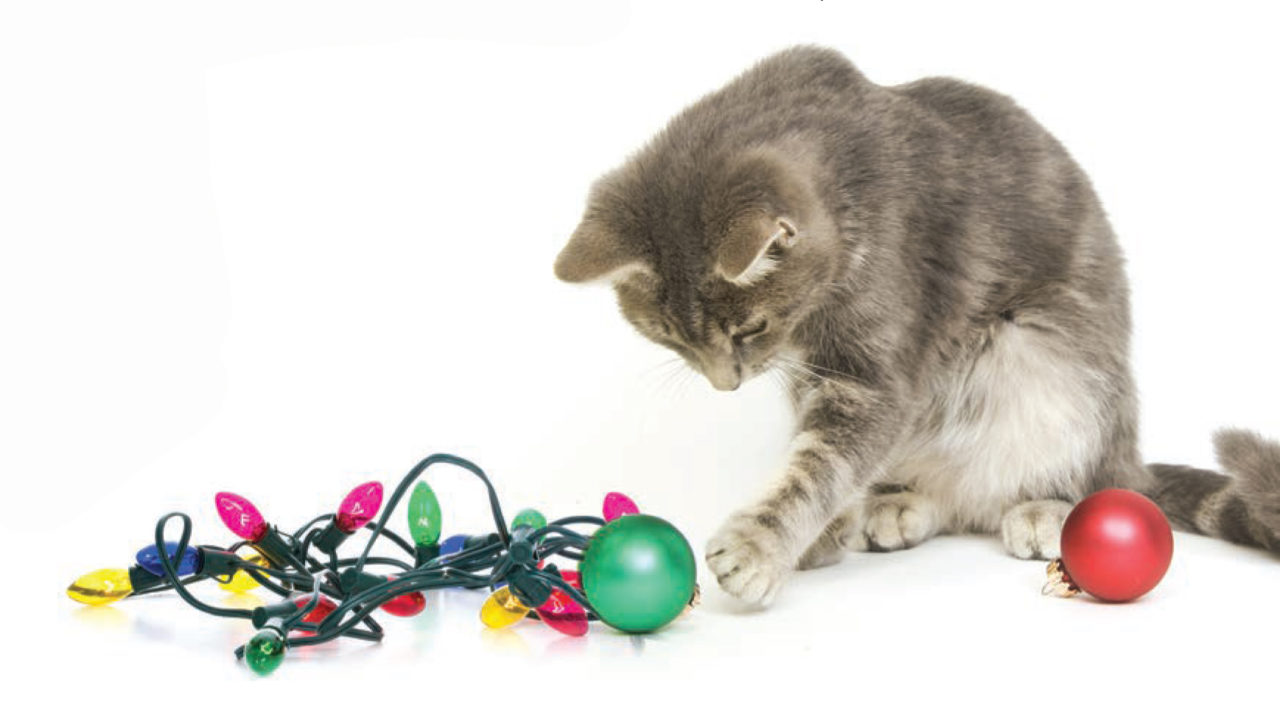 Cats are creatures of habit, so if more people are under one roof all of a sudden, they can get stressed or dehydrated. Holt recommends giving your cat more one-on-one time in a full house and increasing their wet food rations to avoid possible dehydration.
Cats are creatures of habit, so if more people are under one roof all of a sudden, they can get stressed or dehydrated. Holt recommends giving your cat more one-on-one time in a full house and increasing their wet food rations to avoid possible dehydration.
Another shift in a cat’s environment are twinkling fairy lights. Holt has treated cats with mouth sores and electrical shock from chewing on warm cords. Try
to place cords out of your cat’s reach, or make sure there are no exposed wires.
Christmas tree ornaments can be dangerous for cats and dogs as well, and any ornaments small enough to swallow should be hung higher on the tree. Holt cautions hanging aluminum tinsel that looks like icicles, as cats can swallow them.
“Long story short, for my first [gastrointestinal] surgery, I took a full ornament, hook intact, out of a dog’s stomach. To this day I have no idea how he swallowed that,” Holt says. “Fortunately, the ball didn’t break. They actually hung it on their tree again.”
This holiday season, ask yourself if what you are about to give or bring into your pet’s life is safe. Is it only a small, bite-sized portion? Is it all clear of fat? Is it void of chocolate and electrical currents?
As long as it’s safe, we all do it—it’s the season of giving, after all.
Megan Troutman grew up in Fort Collins. She is the marketing director for a chiropractic clinic and, in her “spare time,” chronicles travel misadventures on her blog, “Crap, I’m Lost.” To comment on this article, email letters@nocostyle.com.

